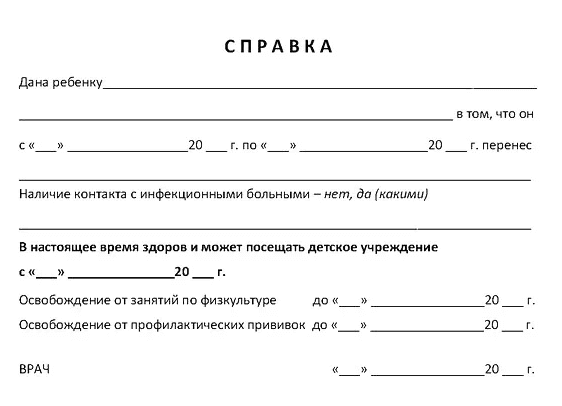Advanced Postman Techniques: Beyond The Basics

Table of Contents
Mastering Postman Collections for Efficient API Management
Effective API management is crucial for large-scale projects. Postman Collections offer a powerful solution for organizing and reusing your API requests, significantly boosting your efficiency. This section explores key aspects of leveraging Postman Collections for streamlined API workflows.
Keywords: Postman Collections, API Management, Collection organization, Collection Runners, Chaining requests
-
Organize your API requests into logical collections for better management and reusability. Instead of scattered individual requests, group related API calls into collections. This improves readability and simplifies maintenance, particularly when dealing with numerous endpoints. For example, create a collection for user management, another for product catalog APIs, and so on.
-
Learn how to leverage collection folders for enhanced organization of large API projects. As your projects grow, using folders within collections provides an additional layer of organization. This hierarchical structure allows for easy navigation and management of even the most complex API setups. You can group related requests within folders, such as "Authentication," "User Data," and "Product APIs," making your collection easier to understand and maintain.
-
Utilize collection runners for automated execution of test suites and generating comprehensive reports. Postman's collection runner allows you to execute all requests within a collection automatically. This is invaluable for regression testing and ensures consistent API functionality. The runner also generates detailed reports, highlighting successes and failures, aiding in quick identification of issues.
-
Explore chaining requests within a collection to simulate complex workflows and dependencies. Chaining requests enables you to simulate realistic user flows. For example, you might chain a login request, followed by a data retrieval request, and finally a data update request. This holistic approach allows for more comprehensive and accurate testing of your APIs.
-
Example: Create a collection for e-commerce operations. One folder could contain requests for user authentication ("Login," "Registration"). Another folder could house requests related to product management ("Get Product Details," "Add to Cart," "Process Order"). This structure keeps your requests organized and easily accessible.
Harnessing the Power of Postman Environments for Dynamic Testing
Postman Environments are a cornerstone of efficient and adaptable API testing. They allow you to manage different API configurations dynamically, making it simple to switch between development, staging, and production environments without altering your requests manually.
Keywords: Postman Environments, Dynamic Variables, Environment Variables, API Testing, Test Environments
-
Understand the concept of environments and their importance in managing different API configurations (development, staging, production). Each environment stores a set of key-value pairs representing variables like base URLs, API keys, and authentication tokens. This means you can easily switch between different API instances with a simple environment change.
-
Master the use of environment variables for dynamic values like URLs, API keys, and authentication tokens, simplifying configuration changes across tests. Instead of hardcoding values into your requests, use environment variables. This makes updates much easier—change the value in one place, and it's reflected across all your requests in that environment.
-
Implement different environments for various testing phases – development, staging, and production. This allows you to test against different API versions and configurations without modifying your requests. This best practice significantly reduces errors and improves testing accuracy.
-
Example: Create separate environments for your development (
dev), staging (staging), and production (prod) APIs. Each environment will have its own base URL and other necessary variables. Switching between these environments is straightforward, ensuring that your tests are always targeting the appropriate API instance.
Automating API Testing with Postman Scripts
Automating repetitive tasks is crucial for efficiency. Postman's scripting capabilities, using JavaScript, enable powerful automation of pre-request and test actions. This section demonstrates how to leverage these capabilities for robust API testing.
Keywords: Postman Scripts, JavaScript, API Automation, Pre-request Scripts, Test Scripts, Assertions
-
Learn the basics of JavaScript scripting within Postman to automate pre-request and test scripts. Pre-request scripts run before a request is sent, allowing you to modify request parameters dynamically. Test scripts run after a request is sent, enabling validation of the response.
-
Write pre-request scripts to dynamically modify requests based on environment variables or previous responses. For example, use a pre-request script to generate an authentication token and include it in subsequent requests.
-
Create robust test scripts using assertions to validate responses against expected results, ensuring API accuracy. Assertions are crucial for verifying that your API returns the expected data. Postman provides built-in assertion functions, allowing you to check response codes, headers, and body content.
-
Explore various assertion libraries and techniques to perform comprehensive response validation. Use a combination of assertions to cover all aspects of the response, guaranteeing the API's reliability and accuracy.
-
Example: Write a pre-request script to generate a timestamp and include it as a parameter in your API request. Then, use a test script to assert that the response includes this timestamp, verifying the API's accurate handling of dynamic data.
Advanced Techniques for Collaboration and Version Control
Effective collaboration is essential in team-based API development. Postman offers features that streamline teamwork and ensure version control. This section provides insights into these collaborative aspects.
Keywords: Postman Collaboration, Version Control, Git Integration, Team Workflows, API Collaboration
-
Utilize Postman's collaboration features to share collections and work effectively with team members. Postman allows for easy sharing of collections, facilitating collaboration among team members. This simplifies project management and improves team efficiency.
-
Integrate your Postman workspace with Git for version control and seamless collaboration. Git integration allows you to track changes to your collections, enabling rollback to previous versions if necessary. This ensures maintainability and consistency across different development stages.
-
Establish efficient workflows for code reviews and updates within your team's Postman projects. Implementing clear code review processes is vital for maintaining code quality and consistency. This process should include clear guidelines for updating collections and handling conflicts.
-
Discuss best practices for maintaining consistent and well-documented API tests using Postman. Thoroughly documented API tests are key to maintaining clarity, preventing confusion, and simplifying future maintenance and troubleshooting. Ensure consistent naming conventions and detailed descriptions for each request and assertion.
Conclusion
This guide has explored advanced Postman techniques, empowering you to optimize your API testing and development workflows. By mastering collections, environments, scripts, and collaboration features, you'll improve efficiency, reliability, and overall productivity.
Call to Action: Ready to take your API testing to the next level? Start exploring these advanced Postman techniques today and unlock the full potential of this powerful tool. Embrace advanced Postman techniques for a more streamlined and efficient API development process.

Featured Posts
-
 Nea Stoixeia Gia Toys Fonoys K Setyligontas To Tampoy
May 20, 2025
Nea Stoixeia Gia Toys Fonoys K Setyligontas To Tampoy
May 20, 2025 -
 O Sostoyanii Zdorovya Shumakhera Pechalnaya Situatsiya Rasskazannaya Drugom
May 20, 2025
O Sostoyanii Zdorovya Shumakhera Pechalnaya Situatsiya Rasskazannaya Drugom
May 20, 2025 -
 Ferraris Official Statement Regarding Charles Leclerc At Imola
May 20, 2025
Ferraris Official Statement Regarding Charles Leclerc At Imola
May 20, 2025 -
 Todays Nyt Mini Crossword May 9th Answers And Clues
May 20, 2025
Todays Nyt Mini Crossword May 9th Answers And Clues
May 20, 2025 -
 Moodys Downgrade Dow Futures And Dollar React Live Updates
May 20, 2025
Moodys Downgrade Dow Futures And Dollar React Live Updates
May 20, 2025
